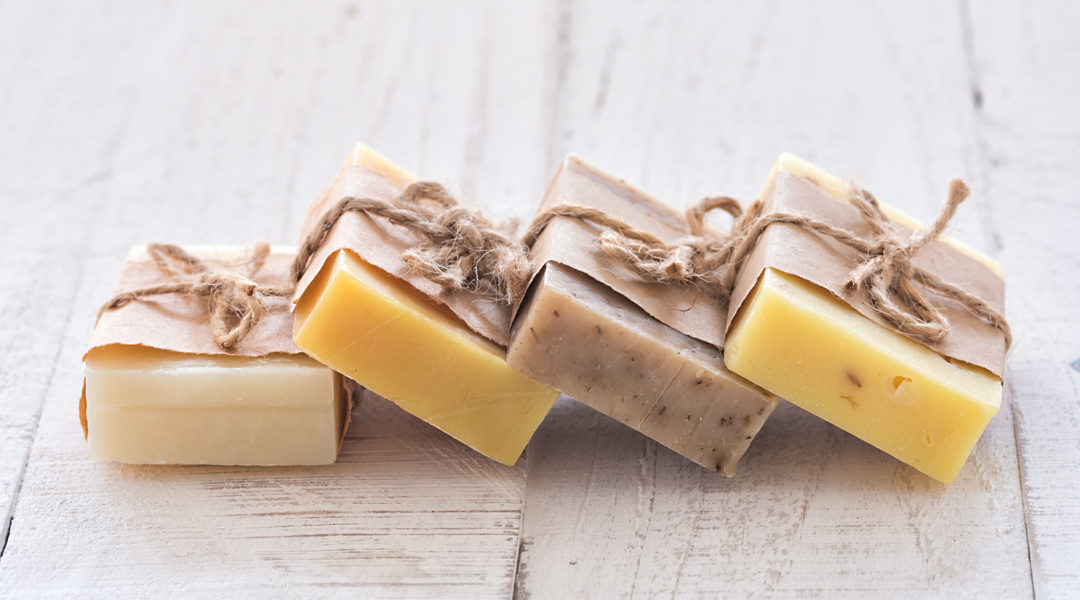True soap is created by mixing together oils or fats and lye. The reaction that takes place is called saponification and the result is a combination of soap and glycerin. Using olive oil will leave elements of olives, using coconut oil will leave elements of coconut, and so on. Other natural ingredients can of course be added, like Shea butter for skin nourishment or oatmeal for exfoliant properties. Nothing should be removed and no synthetic chemicals need to be added, this true soap is just fine as it is.
On the other hand we have mass-produced detergent products, let’s call them synthetic soaps. These are robbed of their most valuable ingredient, glycerin, straight after the saponification process. A natural humectant, glycerin attracts moisture to your skin and is renowned as a soothing emollient. Unscrupulous soap manufacturers separate the glycerin from the soap to sell or use in other more expensive products. They then often add synthetic ingredients, detergents, foaming agents and chemical fragrances to the glycerin-lacking soap to simulate the properties of what was removed.
Today there are very few true soaps on the market. Most body cleansers, both liquid and solid, are actually synthetic detergent products..
There was once a time when all soap was handmade. The traditional way to create it was, and still is, called the cold process. Once the soap mixture has been prepared it’s poured into molds to saponify for a day, taken out to dry for a day, and then cut into bars of soap and left to cure for a month or more. It’s as natural as soap gets, and that’s exactly how we make our natural soap here at Dr. Squatch. At the turn of the 19th century, when it was discovered that glycerin could be extracted from soap, everything changed.
With the growth of industrial manufacturing, the small handmade soap makers were pushed out by bigger companies who capitalized on being able to extract valuable glycerin, which could be sold or used in other more lucrative products. For example, glycerin is an essential ingredient for nitroglycerin, the explosive used in dynamite, and there was much demand for it at the beginning of 20th century. The glycerin-free soap became a by-product, was mixed with cheap synthetic ingredients to imitate true soap, and was sold much cheaper than traditional handmade soap makers could compete with.


Hi, this is a comment.
To get started with moderating, editing, and deleting comments, please visit the Comments screen in the dashboard.
Commenter avatars come from Gravatar.
Pellentesque semper porta sapien, ut aliquet libero auctor posuere. Praesent consectetur elit justo. Maecenas eget vehicula felis.
Aenean sed mauris tortor. Integer eget feugiat dolor, in porttitor dolor. Donec placerat felis in maximus dignissim. In vehicula tortor enim, in bibendum nunc elementum quis.
Sed vehicula tortor vel tincidunt fermentum. Praesent sodales sapien vel elementum mollis. Donec sollicitudin libero id finibus imperdiet. Aenean ac ultricies ex. Mauris eget consectetur arcu.
Nunc ultricies pretium hendrerit. In elementum accumsan augue, porta pellentesque dolor volutpat vel. Vestibulum ac sollicitudin erat.
ADFSGRFDZHTDFH